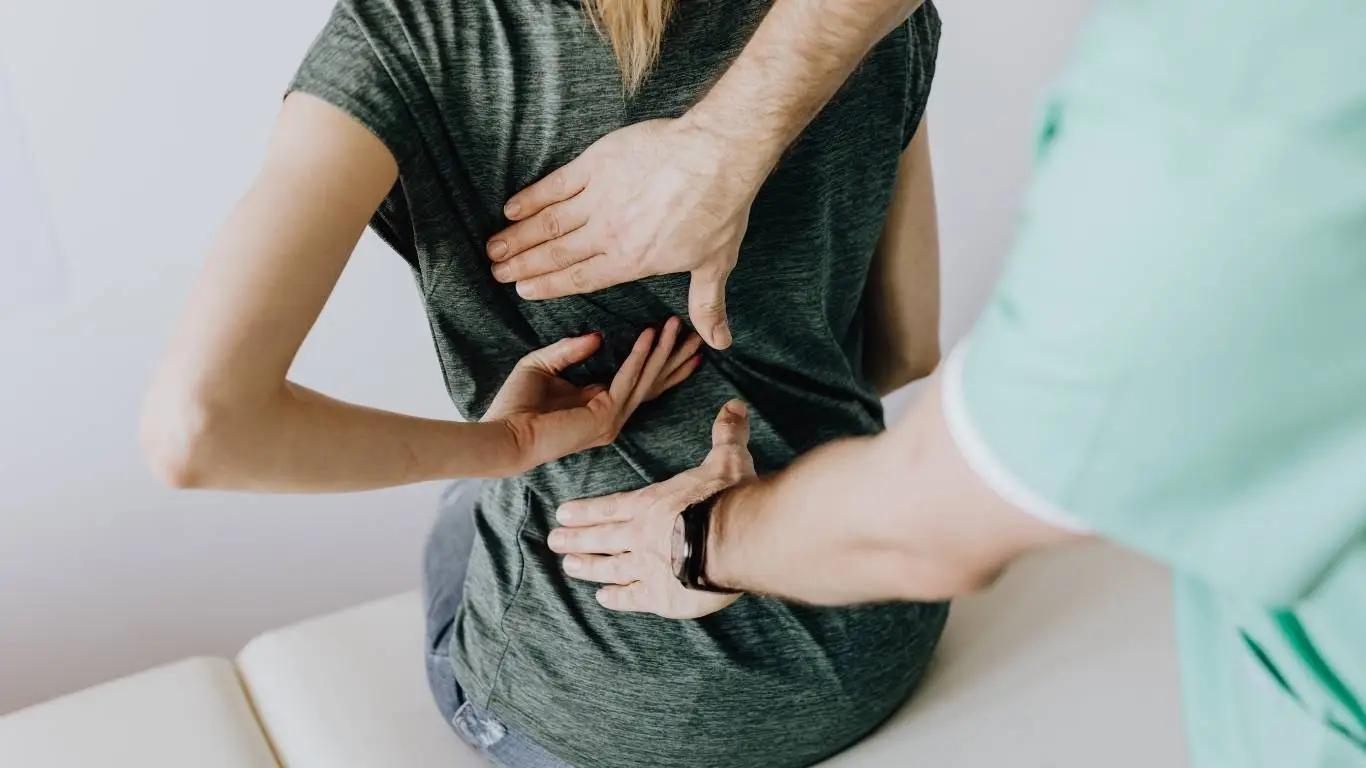Why Truck Drivers Struggle With Lower Back Pain Daily
Driving a truck for a living isn’t just a job — it’s a lifestyle. Long, lonely hours on the road, tight deadlines, and unpredictable schedules are just part of the game. But if there’s one thing I didn’t expect when I first got behind the wheel professionally, it was how brutally punishing those hours could be on my lower back. If you’re a trucker, you probably know what I mean. That dull ache creeping in by hour four, the sharp twinge when you climb down from the cab — yeah, that. Let’s talk about why it happens and what we can actually do about it.
Why Lower Back Pain Hits Truck Drivers So Hard

Extended Sitting Is a Silent Back Killer
Sitting for long stretches of time — especially with poor posture or an unsupportive seat — compresses your spine. I didn’t realize how much pressure I was putting on my lumbar discs until I started getting out of the cab feeling like I aged 20 years. The damage from prolonged sitting doesn’t just go away when you stand up. It builds up over time and becomes a chronic issue that’s hard to shake.
Constant Vibration Wears You Down
Even if you don’t notice it, your spine definitely does. Every bump, every mile of rough road sends vibrations straight up your spine. Over the years, it wears down spinal discs and tightens up your muscles like a rusted-up coil. And if you’ve ever driven on poorly maintained roads for 8+ hours, you know exactly how that feels.
Muscle Imbalance and Poor Core Engagement
When your core isn’t pulling its weight, your lower back ends up taking the hit. Sitting doesn’t exactly work your abs or glutes — the muscles that are supposed to support your spine. After years on the road, I realized I wasn’t just out of shape — my body was out of balance. And that imbalance was directly feeding my back pain.
Daily Habits That Make It Worse

Ignoring the Warning Signs
I used to tell myself that the pain was just part of the job. Turns out, that’s exactly how I let it get worse. The early signs of worsening back pain often start small — stiffness, numbness, or mild pain. Ignoring them can lead to more serious problems like herniated discs or sciatica.
Poor Sleep Setup in the Cab
A bad mattress or awkward sleeping position in your truck can mess with spinal alignment. It’s not just about comfort — poor sleep posture keeps your muscles from fully relaxing and recovering. I eventually invested in a custom foam topper and made a few ergonomic tweaks in my sleeper. It was a game-changer.
Skipping Movement Breaks
When you’re trying to make good time, it’s easy to push through and skip breaks. But even just a five-minute stretch every 2-3 hours can relieve built-up tension and give your lower back a much-needed reset.
What Actually Helps (That I’ve Tried and Can Vouch For)

Upgrading Your Seat
This might sound obvious, but I didn’t believe it until I tried it — a proper ergonomic truck seat can work miracles. Look for seats with lumbar support, vibration dampening, and adjustable armrests. Bonus points if you pair it with a lumbar support cushion that fits your spine’s natural curve.
Stretching Routines That Actually Work
I found a simple five-move routine that targets tight hips, hamstrings, and lower back — basically the holy trinity for truckers. Do them before bed or during rest stops. Stretching doesn’t just help pain; it improves blood flow and keeps you limber behind the wheel. I highly recommend these yoga poses tailored for back tension.
Strengthen Your Core (Without a Gym)
It sounds weird to say, but planking next to my rig became part of my morning routine. Just a few minutes of core work each day builds up spinal support, helping reduce the strain on your lower back. No equipment needed. A strong core equals a more resilient back — trust me.
Bonus Lifestyle Fixes That Add Up

Anti-Inflammatory Diet (Even on the Road)
I used to live off truck stop burritos and gas station snacks. Not proud. Switching to high-protein snacks, leafy greens, and anti-inflammatory foods like berries and almonds made a difference I could feel. Chronic inflammation makes back pain worse — this diet plan helps lower the flare-ups.
Hydration and Its Underrated Impact
Dehydrated spinal discs compress more easily and don’t function as shock absorbers. I aim for at least 2 liters of water a day now, and yeah, it means more pit stops — but my back thanks me.
Tracking Pain Patterns
This is more practical than it sounds. Keep a note of what days are worse, what activities trigger it, and when relief sets in. Over time, I could pinpoint patterns and make adjustments — like switching shoes or driving posture — that made a big difference.
To get a deeper understanding of posture, rehab, and trucker-specific ergonomics, the ergonomics and rehab pillar guide breaks it down in a useful, no-fluff way. Also, the full back pain main pillar is solid if you want the bigger picture on causes, prevention, and all treatment angles.
When Pain Goes Beyond the Usual

Is It Just Muscle Strain or Something Worse?
For the longest time, I assumed all my back pain was just sore muscles. But not all lower back pain is created equal. There are deeper issues — herniated discs, spinal stenosis, sciatica — that can sneak up on you. I learned the hard way when sharp leg pain started radiating down from my hip after a long haul. If your pain isn’t going away or is getting worse, check out the differences between sciatica and other types of back pain so you know when it’s time to stop toughing it out and get help.
Nerve-Related Back Pain Is a Whole Other Animal
If you’re getting tingling, numbness, or burning pain that travels, that’s your nerves talking. And it’s not something you want to mess around with. In my case, an MRI revealed a bulging disc pressing on a nerve root — something I wouldn’t have caught without proper imaging. Don’t wait too long to act. Advanced diagnostic tools like MRIs and nerve conduction studies are more accessible than you think, and they can make all the difference in getting the right treatment.
Non-Surgical Treatments That Actually Help

Physical Therapy Without the Clinic
You don’t need a fancy rehab center. There are trucker-specific stretches and strength routines that mimic PT exercises, right from your cab. A good place to start is this resource on degenerative disc management — it helped me build a simple program I still use on the road.
Chiropractic Adjustments
I used to think chiropractors were for weekend warriors and soccer moms — until I finally tried one. A few spine adjustments later, I was standing taller, moving easier, and honestly kind of mad I hadn’t gone sooner. Spinal realignment may not fix every case, but if you’re out of alignment from all those hours behind the wheel, it’s worth considering.
Massage and Cupping
Let’s be real — truck stops don’t exactly offer massage therapy. But if you can schedule regular sessions during home time, deep tissue massage and even cupping therapy can relieve tension and boost circulation. I also use a compact massage gun between trips. Total back lifesaver.
When Surgery Might Be on the Table

Signs You Might Need Surgical Help
Surgery isn’t a first step — but sometimes it’s necessary. If your pain is constant, getting worse, or affecting your bladder/bowel control (yep, that’s a thing), it might be time to consult a specialist. My cousin, also a long-hauler, had to undergo microdiscectomy surgery and bounced back stronger than ever. Early intervention makes a huge difference.
Modern Procedures Are Less Scary Than You Think
I used to think surgery meant months in bed and a career on hold. Not anymore. Minimally invasive options like epidural injections, radiofrequency ablation, or even spinal cord stimulators can give you serious relief with minimal downtime. Talk to your provider — you may be surprised at what’s available.
Modifying the Trucking Lifestyle (Without Quitting)

Build Back-Friendly Routines Into Your Route
I started planning stops not just around fuel and food, but around movement. Every few hundred miles, I do basic stretches, use a resistance band, or even walk a lap around the truck. It keeps the blood flowing and the stiffness at bay.
Smart Gear That Eases the Strain
From lumbar cushions to supportive back braces and ergonomic seat upgrades, there’s gear out there that makes a huge difference. Even something as simple as proper footwear can affect spinal health more than you’d expect.
Mindset Shift: Pain Isn’t a Badge of Honor
I used to think pushing through the pain made me tough. But pain is your body’s way of saying something’s off. The sooner you treat it, the longer you can stay on the road — and the healthier you’ll be doing it. There’s zero shame in managing your health like a pro.
For truck drivers trying to stay in the game long-term, you owe it to yourself to dig into the lifestyle and natural remedy guide. And if you’re looking for the broader context around spinal health, you’ll find what you need in the complete back pain resource hub.

Camellia Wulansari is a dedicated Medical Assistant at a local clinic and a passionate health writer at Healthusias.com. With years of hands-on experience in patient care and a deep interest in preventive medicine, she bridges the gap between clinical knowledge and accessible health information. Camellia specializes in writing about digestive health, chronic conditions like GERD and hypertension, respiratory issues, and autoimmune diseases, aiming to empower readers with practical, easy-to-understand insights. When she’s not assisting patients or writing, you’ll find her enjoying quiet mornings with coffee and a medical journal in hand—or jamming to her favorite metal band, Lamb of God.






